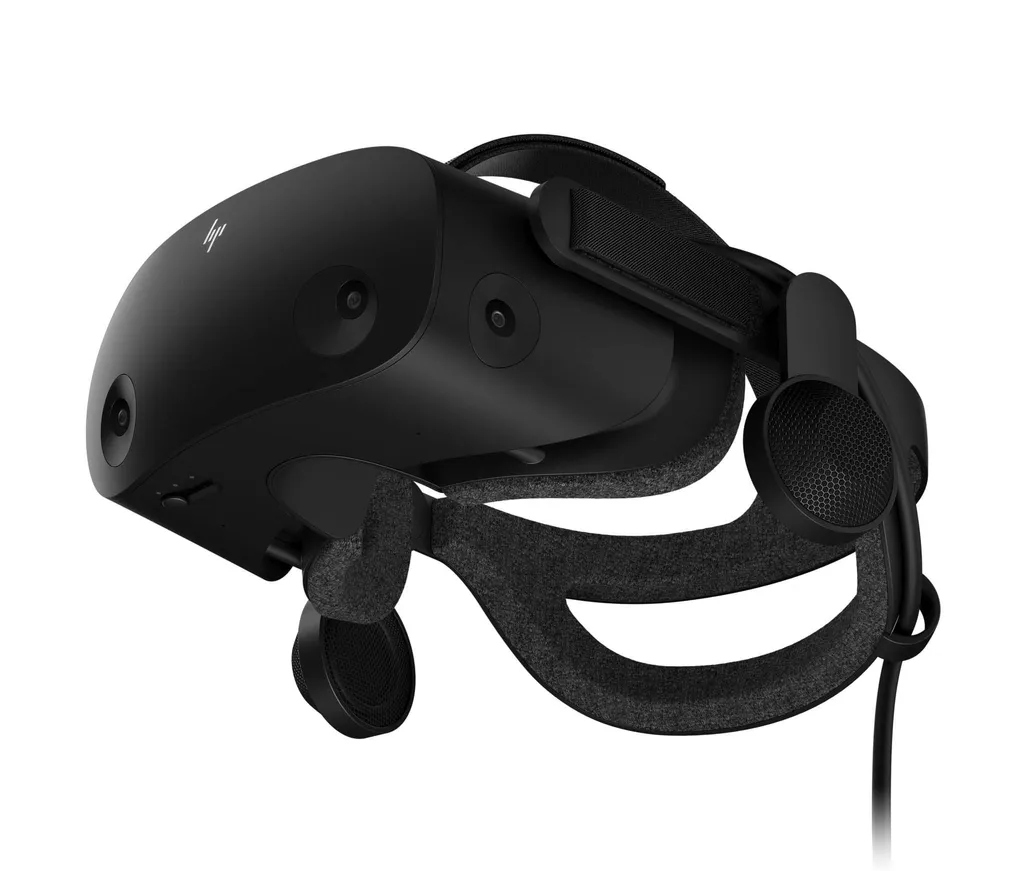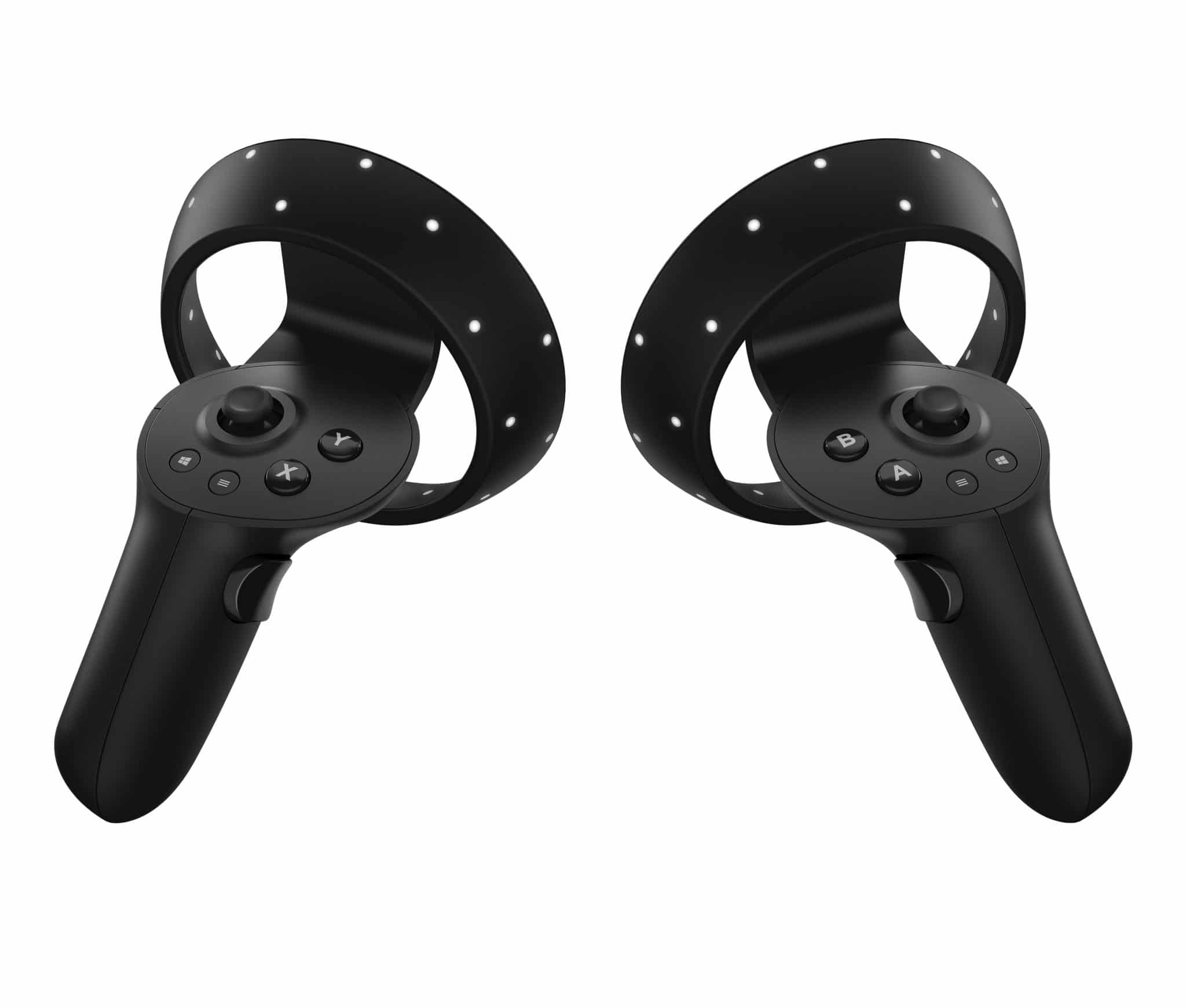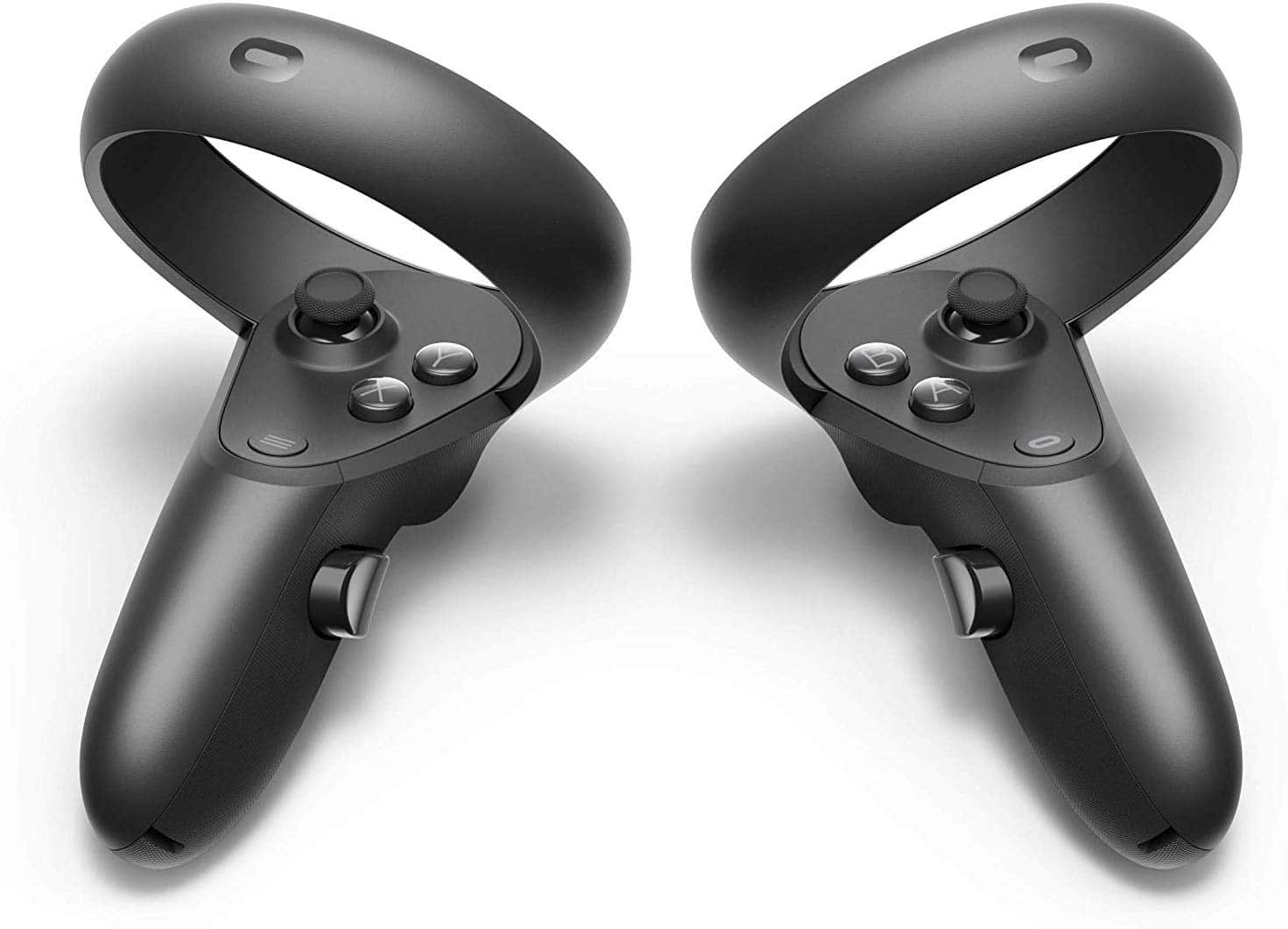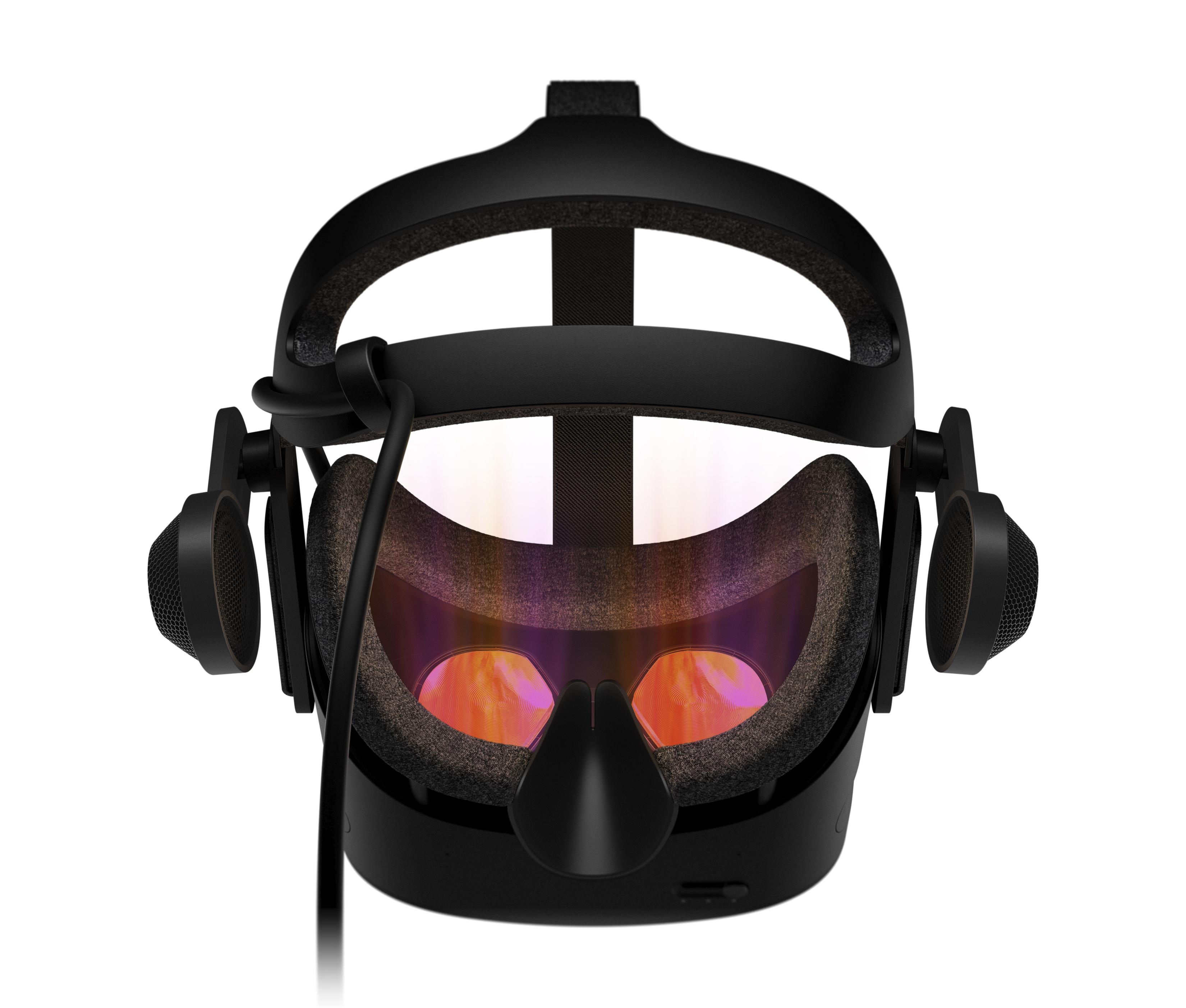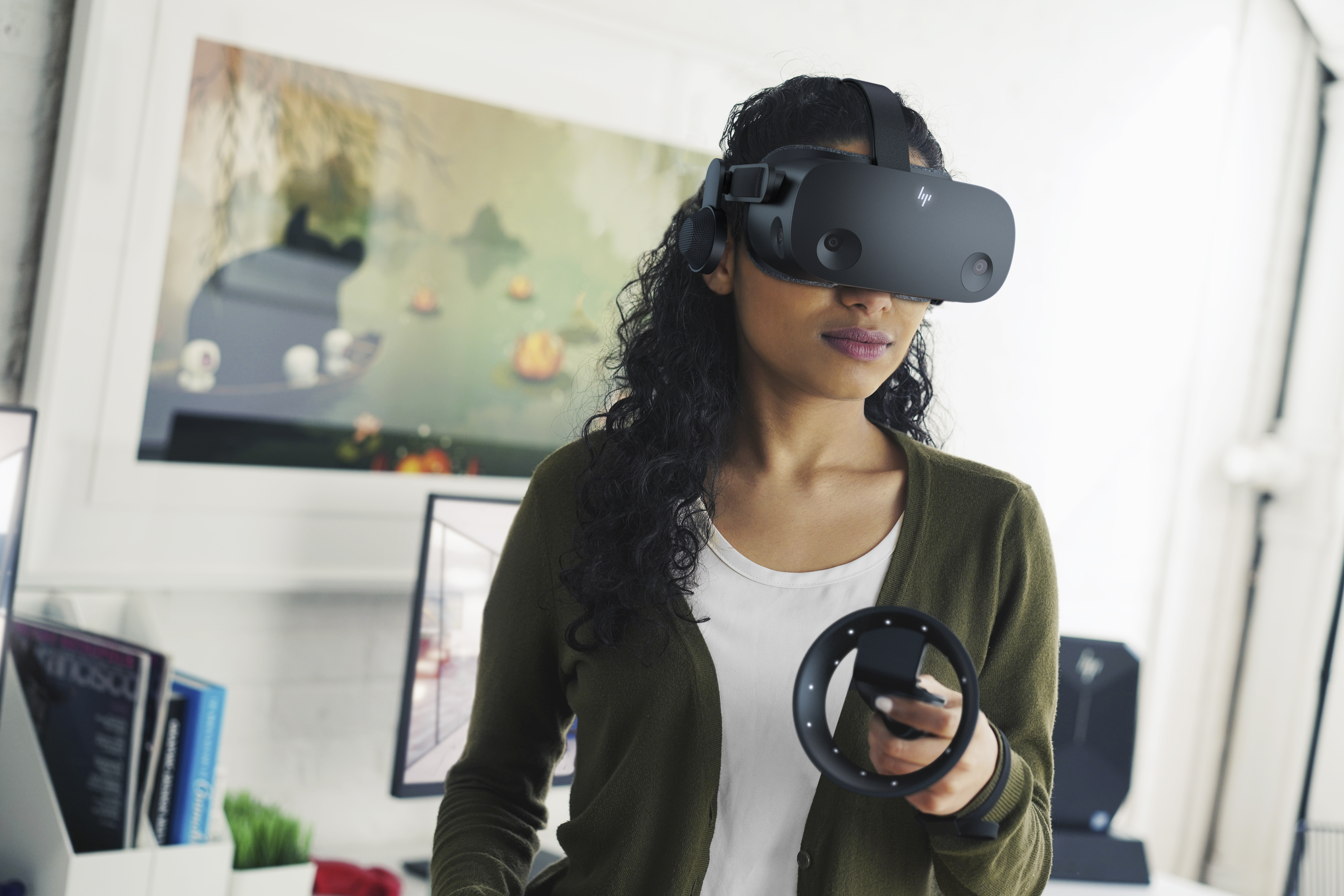HP appears to be taking notes from both Valve and Facebook with its latest headset, the Reverb G2, featuring four outward-facing tracking cameras, Valve’s audio and lens technology and redesigned Windows Mixed Reality (WMR) controllers that look a lot more like Oculus Touch.
Reverb G2 is priced $599. The new HP headset also features a slider on the bottom for physical separation of the lenses and panels to adjust between 60mm and 68mm for better focus and fitting on a wider range of faces.
HP formally worked with Valve and Microsoft on the development of the new system which features 2160×2160 LCD panels per eye, with each panel measuring 2.98 inches, and a field of view said to be 114 degrees. That makes for some of the highest resolutions you’ll find in a consumer-grade VR headset. The new design also drops touchpads from the controllers that were emblematic of Microsoft’s first generation of VR input. That means HP essentially settled on using analog sticks and an overall input design that matches Facebook’s Oculus Touch. The company stressed to us that these controllers are unique to its headset.
As well as coming bundled with the headset, HP plans to sell the new controllers separate from the G2 and they are backwards compatible with earlier WMR headsets. Older WMR controllers aren’t compatible with the G2, according to HP, so you’ll only be able to buy the G2 headset as a package with the new controllers.
Here’s a look at the Oculus Touch controllers for a comparison:
Best of Both Worlds?
While HP sent the original Reverb to me to review last year the headset didn’t fit me. The display was such a mismatch for my face shape and larger-than-average eye distance (I saw a visible line at the edge of the display whenever I wore it) that I opted to send it back to HP without publishing a review. More broadly, the headset was also unavailable for purchase some of the year. Its competition was Facebook’s Lenovo-made PC-only Rift S which shipped starting in May 2019 while some buyers grabbed Valve’s high-end Index headset. Late in the year HTC also started selling the Vive Cosmos in a range of configurations. If you were looking for a PC-only VR headset in 2019 then you were deciding between pricing tiers set at $400, $1,000 and $700, respectively.
For 2020, HP seems to be hoping to get ahead of demand by opening pre-orders the same day as announcing the G2 with some premium features targeted at $600. The new headset is expected to ship this fall and this new design seems to carry features drawn from some of the best of both Valve and Facebook worlds. HP designers feel they built a no-compromise VR headset with the G2.
For instance, G2 features the same off-ear audio speakers as Valve Index. There’s no 3.5 mm audio jack on the G2, instead featuring the same powerful speakers that are so stunning on Valve Index. And while the lenses aren’t the same as Valve Index, HP says they are using Valve’s lens technology in its design for increased clarity.
The headset features two side cameras for better controller tracking, in addition to the two front-facing cameras featured on every other Windows Mixed Reality headset. While that’s not quite the five installed on Rift S — with Facebook’s headset also featuring a top-side camera to capture over-the-head movements — we’d expect a considerable upgrade in controller tracking quality as compared to previous WMR headsets. HP says Reverb G2 features “1.4X more movement capture.”
The system also features dual microphones, a 90 hz refresh rate and a detachment cable that comes all the way up to the headset. If your computer provides enough power it can connect with USB-C and Displayport, with a Mini Displayport adapter in the box. There’s also the option for a power brick to power the headset if your PC doesn’t provide enough power.
The headset still uses Microsoft’s walk-the-headset-around-the-room setup process and there’s the standard Windows “flashlight” mode to view the world in passthrough. The on-board cameras don’t track hand movements, according to HP.
It doesn’t sound like there will be hands-on opportunities with the finished hardware until later this year. That means some prospective buyers will be placing pre-orders for the headset before there are hardware impressions to share. We’ll bring you the latest on the Reverb G2 as soon as we have it.
We’re curious what you think of the new VR headset from HP — let us know in the comments.

